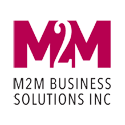Imagine a Product Team of 2035. It can have a Product Manager, 50, a Product Engineer, 35, and a Design Intern, 22. Such permutations and combinations across Millennials, Gen Z, and Gen Alpha will be commonplace in offices about a decade from now.
Unlike the past when the workforce only (or at least majorly) comprised Baby Boomers, the future will have 3-4 generations working in close quarters with each other. Understanding the needs, demands, and priorities of such a diverse group is both a challenge and an opportunity for leaders.
- The Millennials (1981-1996)
Millennials are currently the largest working generation. They expect a sense of meaning from their jobs, fair compensation, and regular opportunities to learn and grow. Rather than a taskmaster, they want their leaders to play a more developmental and supportive role.
- Gen Z (1997-2012)
Born in the internet and smartphone era, Gen Z employees prefer working for companies with core values that align with their personal beliefs. They value diversity, transparent work culture, work-life balance, and mental health.
- Gen Alpha (Early 2013s-2024)
While Gen Alphas are yet to join the workforce, they’re expected to disrupt our current workplace soon. Digitally-inclined and lifelong learners, this generation prefers working for companies that emphasize inclusion, regular upskilling, use of technologies like AI, hybrid working, and mental well-being.
Leading Multigenerational Employees
Every generation brings with it new challenges and opportunities. But the world around us is advancing so rapidly that future generations can have striking dissimilarities from people you’ve led in the past.
As a leader, the time to start adjusting your leadership approach is now. Here are a few tips that can help-
1. Offer a Sense of Purpose
Millennials, Gen Zs, and Gen Alphas don’t just work for the sake of it. Instead, they value purpose and meaningful work, even over paycheck in many cases.
The more they feel their work is purposeful and is making some kind of change, the higher the positive impact on their work performance and attitude. Here’s how leaders can offer a sense of purpose at the workplace-
- Have a clear mission statement and work towards it
- Discuss performance goals and objectives regularly
- Encourage professional and personal development
- Recognize and reward employees for their contribution
2. Leverage Modern Technologies
In this era of technology, you are sure to miss out on plenty of business opportunities if you’re unable to leverage the latest advancements like AI, ML, AR/VR, etc.
And not just from the business point of view, you’ll also be unfavored by the tech-inclined generations of the future if you continue following the old-school methods. Here are some pointers to fuel your technological growth-
- Explore how technologies like AI can be used for completing mundane tasks
- Use a combination of online and offline communication channels
- Deploy digital tools to facilitate easy collaboration
- Offer hybrid working and permanent remote working options
3. Improve Company Culture
A transparent company culture is one more thing dear to the current and future generations of employees. It includes the everyday attitudes, behaviors, and policies impacting a company’s work environment.
As company culture directly influences the engagement and productivity of the team members, it is something leaders should prioritize on a regular basis. Use these tips to improve your company culture-
- Invest in team-building activities
- Encourage open and regular communication
- Take feedback from the employees
- Providing learning opportunities
4. Incorporate Spirituality at Work
Incorporating spirituality is an effective solution to help employees across generations with their mental health. It helps people become more self-aware, reduces stress, and boosts overall well-being.
Spirituality can also help your employees feel more satisfied and connected with their work, leading to improved work quality and lower absenteeism and turnover. Here’s how you can build a more spiritual workplace-
- Organize Yoga and meditation sessions at work
- Have a more positive outlook towards work and life
- Lead with empathy
- Build an environment of diversity and inclusion
Understanding and Leading Different Generations
Every generation has a preferred mode of being led, shaped according to their values and life experiences. While it is up to the leaders to choose a leadership approach they believe is best for their organization, the tips discussed above will guide you in the right direction- where you can build trust among your employees and confidently lead them.
Consider professional assistance along the way to further refine your leadership skills and build a team of engaged, productive, and satisfied multigenerational employees.


